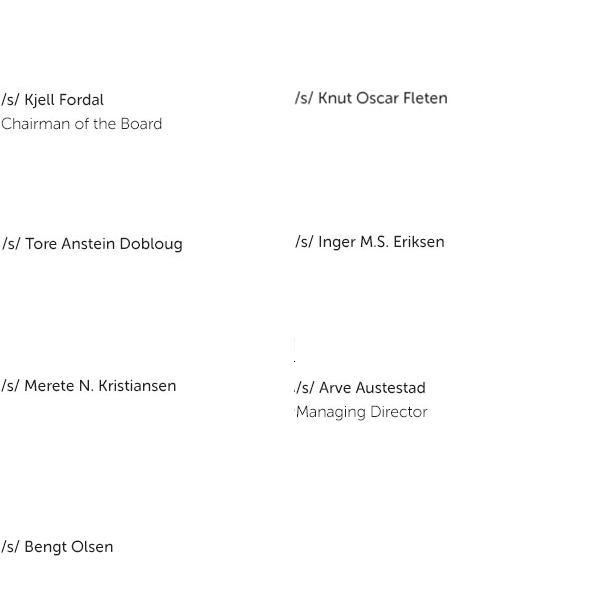Boligkreditt 2nd Quarterly Report 2019
Statement of the board of directors
SpareBank 1 Boligkreditt’s purpose
SpareBank 1 Boligkreditt AS (‘Boligkreditt’, ‘SpaBol’, or ‘The Company’) is a credit institution licensed by the Norwegian Financial Supervisory Authority (Finanstilsynet) and is operated according to the legislation for covered bond issuers in Norway which is included in the law regarding financial enterprises (“Finansforetaksloven”) chapter 11, section II and the detailed regulations thereof.
The purpose of the Company is solely to provide funding for its owner banks by buying qualifying residential mortgage loans from them with a loan-to-value (“LTV”) of up to 75 per cent and financing these through the issuance of covered bonds1.
The Company, which is based in Stavanger, is owned by banks which are all members of the SpareBank 1 Alliance. A comprehensive agreement with each of these banks regulates the mortgage purchasing process and the obligations which the banks owe the Company and its mortgage customers (“Transfer and Servicing Agreement”, “TSA”). The Company pays out nearly the full interest margin earned to its owner banks. This margin is accounted for as commissions to owner banks and is included in the interest expense line of the Company’s financial statements.
The Company’s issuances of covered bonds mainly take place under the EUR 25,000,000,000 Global Medium Term Covered Note Programme (GMTCN Programme). This Programme was updated on April 10, 2019 and is available on the Company's home page: https://spabol.sparebank1.no.
The Company has procured the services of Moody’s Ratings Service to evaluate the credit quality of the issuances under the GMTCN Programme. The covered bonds rating is Aaa.
1 The limit for instalment mortgages is 75 per cent, while mortgages which have no scheduled repayment structure are limited to 60 per cent (these are a smaller portion of the mortgage portfolio). All mortgages above 60 per cent must be amortizing by at least 2.5 per cent per year according to current mortgage market regulations.
Cover pool and outstanding covered bonds 2
SpareBank 1 Boligkreditt’s cover pool consists of residential mortgages and liquid, highly rated assets as well as derivatives hedging liabilities in a foreign currency and/or at fixed rates. The chart below illustrates the balances as of the end of the second quarter 2019:
The amount of liquid assets varies over time and the variation is solely a result of the Issuer’s liquidity risk management (and regulatory requirements), whereby upcoming redemptions are refinanced prior to the maturity of outstanding bonds (minimum 180 days) with bond proceeds invested as liquid assets. Liquid assets are covered bonds with a triple-A rating, SSA or government bonds with a triple-A rating or short term cash deposits and repos (please see the cover pool statistical reports for details on the composition of liquid assets).
Derivatives are used solely to hedge currency and interest rate risk. They are tailored to exactly match the cash flows related to the bonds they hedge, for the full duration of the bond. Swap counterparties are subject to certain rating criteria and are in all cases banks that are not the Company’s owner banks
2 The source is the balance sheet figures as of 30 June 2019 and the cover pool asset liability test for overcollateralization (see notes to the financial statements). Norwegian covered bond issuers are required by law to group derivatives as part of cover pool assets, and not together with the issued covered bonds that they hedge. This is reflected in the chart and figures above.
Residential mortgages key figures
The table below provide an overview of the residential mortgages in the cover pool:
| Q2 2019 | Q1 2019 | Q4 2018 | Q3 2018 | Q2 2018 | |
|---|---|---|---|---|---|
| Weighted Average Current LTV (%) | 52.1 % | 53.1 % | 52.7 % | 51.7 % | 51.3 % |
| Weighted Average Original LTV (%) | 59.6 % | 59.6 % | 59.6 % | 59.8 % | 59.8 % |
| Average Loan Balance (NOK) | 1,436,755 | 1,430,260 | 1,422,929 | 1,414,203 | 1,414,916 |
| Number of Mortgages in Pool | 132,583 | 131,375 | 129,209 | 129,791 | 129,057 |
| Percentage of non first-lien mortgages | 0.0 % | 0.0 % | 0.0 % | 0.0 % | 0.0 % |
| Overcollateralization | 6.0 % | 6.5 % | 6.5 % | 6.5 % | 6.7 % |
Key developments during the first half of 2019
SpaBol issued a EUR 1.25 billion, 10 year covered bond in late January and repaid the same amount in a maturing EUR benchmark transaction in February. In May, a 7 year covered bond was issued. Both bonds were well oversubscribed.
The residential mortgage lending volume at SpaBol has increased by approximately 3.5 per cent during the first half year, as measured against the balance of loans as of December 31, 2018. The current mortgage balance is NOK 190.6 billion (equivalent to approximately EUR 20 billion).
The Board of Directors views Boligkreditt as well capitalized with a capital coverage ratio of 16.7 per cent against a total requirement, including buffers, of 15.5 per cent (Pillar 1) plus 0.8 per cent (Pillar 2). Total equity Tier 1 capital is 14.9 per cent against a total requirement, including buffers, of 14.3 per cent. Common equity capital was 13.4 per cent against a requirement, including all buffers, of 12.8 per cent. It is the Company’s policy to maintain capital ratios slightly above the regulatory requirements. When required, additional common equity is paid in by the owner banks in the regular course of business, usually in connection with increases in transferred mortgage volume. Additional Tier 1 and Tier 2 capital is raised in the Norwegian domestic market.
The Norwegian regulator has proposed a change in capital requirements to come into effect at December 31, 2019. The Basel I Norwegian transitory rules in effect for a number of years will be discontinued, and this will lead to an increase in reported capitalization coverage levels for Boligkreditt. With the change implemented, the estimated total capitalization would be 25.5 per cent as of June 30, 2019. At the same time, the requirements for the systemic risk buffer has been proposed to increase to 4.5 per cent (from 3 per cent), the anticyclical buffer is set to increase to 2.5 per cent (from 2 per cent).
Moody’s has increased the requirement for overcollateralization to 2.5 per cent in June 2019, from 0.5 per cent prior. This change results from the conclusion of a rating review process of the Company’s owner banks. The ratings review was initiated by Moody’s due to the introduction of BRRD in Norway, which reduces the likelihood of government support. The Company’s owner banks counterparty risk rating was reduced by one notch, to A1. Boligkreditt’s cover pool overcollateralization at June 30, 2019 was 6 per cent.
Quarterly Accounts
The quarterly accounts have been prepared in accordance with the International Reporting Standards (IFRS) as adopted by the EU and published by the International Reporting Standards Board (IASB).
The Board views the accounts as presented to be a true representation of SpareBank 1 Boligkreditt’s operations and financial position as of the end of the second quarter 2019. Numbers in brackets refer to the corresponding period last year for comparison.
The total balance sheet at 30.06.19 amounted to 243 (253) billion kroner. The balance sheet decreased primarily due to a reduction of liquid assets. The Company had in the first half of 2019 net interest income of 226 (176) million kroner, which also includes the deduction of commissions (almost the entire net interest margin on mortgages) paid to the owner banks. The cost of operations for the first half of 2019 was 16.5 (16) million kroner including depreciation and amortization. IFRS 9 expected loan losses increased by 2 million to 14.7 million. No actual loan losses have occurred since the Company commenced operations in 2007. This produces an operating result of 173 (-6.9) million kroner before tax. In addition to the increase in net interest income, this change in result was due to accounting valuation adjustments on bonds held for liquidity management purposes as well as issued bonds, including derivatives.
Mortgage loans for residential properties amounted to 191 (183) billion kroner as of the first half of 2019. The Company’s own liquid assets were approximately 21 (40) billion kroner.
Liquid assets are cash and highly rated, highly liquid bonds which are held as a function of refinancing early the Company’s upcoming bond maturities at least six months ahead in time, or to comply with the Net Stable Funding Ratio, as proposed. Liquid assets are managed to meet the 180 day minimum liquidity rule in the EU covered bond harmonization directive and the NSFR rule. The minimum liquidity portfolio is managed to whichever of these measures requires the greatest amount.
Risk aspects
SpareBank 1 Boligkreditt as an issuer of covered bonds is subject to strict rules regarding its exposure to credit, market, and liquidity risks. This fact, and the aim of the maintenance of the Moody’s Aaa rating, mean that the Company is subject to low levels of risk and places strong emphasis on risk control.
Credit Risk is defined as the risk that losses can occur as a consequence of that customers and others not having the ability or willingness to meet their obligations to SpareBank 1 Boligkreditt. Because the Company buys residential mortgages within 75% of the value of the objects on which the mortgages are secured, the Board of Directors concludes that the credit risk is lower than for Norwegian banks in general.
Market risk is defined as the risk of losses due to changes in market rates, i.e. interest rates, exchange rates and the prices of financial instruments. At the end of the year SpareBank 1 Boligkreditt AS had issued bonds for approximately 138 billion kroner in EUR, 8.9 billion kroner in USD, 8.2 billion kroner in GBP and 0.3 billion kroner in Swedish kroner, at exchange rates at the end of June 2019. However, all borrowing and investments with a fixed rate and all borrowing and investments in a foreign currency, have been hedged by financial currency- and/or interest rate swap agreements or through natural hedges. The collective cash flow therefore matches borrowings in Norwegian kroner with floating rate conditions (NIBOR 3 months). The Company receives collateral from its counterparties in derivative agreements according to certain criteria.
The bonds held in the Company’s liquidity portfolio are mainly Nordic covered bonds and German supra sovereign and agencies (agencies guaranteed by the German government) with a triple-A rating from Fitch, Moody's or S&P. Deposits are placed in banks with a minimum rating of A/A2. Cash is also placed in reverse repos with approved counterparty banks, with AAA rated securities as collateral.
The Company had as of 30.06.2019 only moderate interest rate risk and immaterial amounts of currency risk.
Liquidity risk is defined as the risk that the Company is not able to meet its obligations at maturity or to to finance the purchase of loans at normal terms and conditions. Liquidity risk is managed based upon a liquidity strategy approved by the Board of Directors. According to the strategy, SpareBank 1 Boligkreditt AS shall maintain a material liquidity reserve with a minimum size equal to or more than all debt maturities within the next 6 months or to comply with the NSFR requirement as proposed, whichever is higher. The Board of Directors views SpareBank 1 Boligkreditt AS’s liquidity situation as good.
Operational risk is defined as risk of loss due to error or neglect in transaction execution, weakness in the internal control, or information technology systems breakdowns or malfunction. Reputational, legal, ethical and competency risks are also elements of operational risk. The risk is assessed by the Board of Directors to be moderate.
The Company spends much time identifying, measuring, managing and following up on central areas of risk in such a way that this contributes to meeting its strategic goals. The notes 23 to 27 in the 2018 annual accounts provides further information.
The Company spends much time identifying, measuring, managing and following up central areas of risk in such a way that this contributes to meeting the strategic goals. The notes 23 to 27 in the 2018 annual accounts provides further information.
Macroeconomic development and outlook3
The Norwegian mainland economy expanded by 2.2 per cent over 2018 and 2.5 per cent is expected in 2019, slightly revised up from the start of this year. The economic cycle is in a moderate but broad growth phase, with increases across several segments of the economy..
The oil sector investments are providing a growth contribution for the economy in 2019, after which they are expected to drop off as large investment projects are completed. Investments in wind energy and other sectors will balance this out for an overall expectation of stable industry or business investments after 2019 (no significant growth contribution).
Housing investments are increasing and are a moderate positive contributor to growth, driven by moderate valuation appreciation in the housing market which is related to household income growth. Increased interest rates (the central bank’s policy rate is now 1.25 per cent, after another increase in June 2019) and lower population growth are expected to keep investments moderate in the years ahead. Household consumption is expected to remain stable growing 2 to 2.5 per cent in real teams, related to wage growth.
The micro-prudential regulations of the mortgage market, which were last tightened in January 2017 and renewed in June 2018, are believed to have had the desired effect, targeting a balancing of supply and demand after rapid price appreciation in 2016, particularly in the capital of Oslo. Residential real estate prices through June in 2019 have increased moderately, they are up 5.3 per cent nationally from the start of the year after a 2.8 per cent increase in 2018, and a 4.1 per cent decline in 2017.
Summarized for a few macroeconomic indicators, the recent data and forecast for the next few years are as follows:
| Forecast (%) | 2017 | 2018 | 2019 | 2020 | 2021 |
|---|---|---|---|---|---|
| Mainland GDP growth | 2,0 | 2,2 | 2,5 | 2,2 | 1,8 |
| Unemployment rate | 4,2 | 3,8 | 3,6 | 3,6 | 3,6 |
| CPI growth | 2,7 | 2,5 | 1,7 | 1,9 | 2,0 |
| Annual wage growth | 2,3 | 2,8 | 3,3 | 3,5 | 3,5 |
| Current account surplus to GDP | 5,7 | 8,1 | 7,6 | 8,6 | 9,0 |
Source: Statistics Norway (SSB) June 6, 2019
3Macroeconomic projections have been sourced from Statistics Norway as of June 6, 2019.
Future prospects of the Company
The Company has a portfolio of residential mortgage loans with an average loan to value (LTV) slightly above 50 per cent and no loans are in default. The maximum allowable level for a mortgage in a cover pool is 75 per cent LTV, with amounts above that level not being eligible as a cover pool asset.
SpareBank 1 Boligkreditt’s residential mortgage portfolio is well diversified, albeit weighted towards the eastern, central and northern regions in Norway (with little exposure in the southwest oil-dominated area of Norway). Mortgage loans in the cover pool are very granular (average size of 1.4 million kroner). The banks in the SpareBank 1 Alliance are required to keep reserves of eligible (i.e. cover pool qualified) mortgages in order to provide replacement assets should this become necessary, i.e. if residential price declines increase LTVs above the eligibility limit for mortgages in the pool. Reserves in the banks are robust, making the covered bond funding function in SpareBank 1 resilient to downward shifts in real estate prices.
Due to a strict qualifying process for loans to become part of the cover pool (bank lending practices, mortgage regulations and cover pool qualification requirements), a high degree of diversification of the mortgages in the poo,l and the continued strength of the Norwegian economy, the Board of Directors views prospects for the Company continuing to be good and stable. The Board also bases this conclusion on the low average LTV of the mortgage portfolio, no defaults or arrears, a strong history and institutional framework in Norway for loan performance, as well as the low unemployment environment.
* * *
The Board of Directors affirms its conviction that the financial accounts present a correct and complete picture of the Company’s operations and financial position at the end of the first half of 2019. The financial accounts including notes are produced under the assumption of a going concern.
There have been no incidents of a material nature after quarter-end which are expected to impact the accounts for the first half of 2019.
Stavanger, 5 August 2019
The Board of Directors of SpareBank 1 Boligkreditt AS





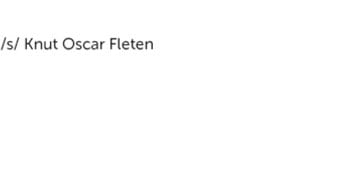

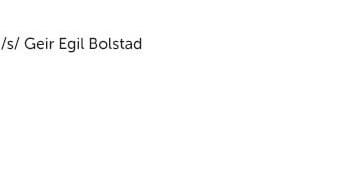

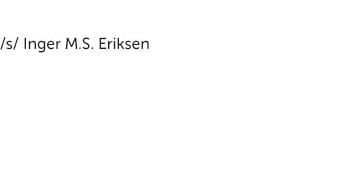

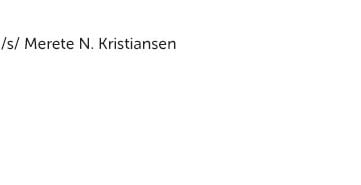

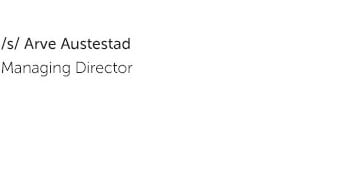
SpareBank 1 Boligkreditt AS
- Statement of the members of the board and the chief executive officer
The Board and the chief executive officer have today reviewed and approved the financial accounts for the first half of 2019 for SpareBank 1 Boligkreditt AS. The accounts have been prepared in accordance with the International Financial Reporting Standards (IFRS), as adopted by the EU.
To the best knowledge of the Board and the chief executive officer the accounts have been prepared in accordance with applicable accounting standards and give a true and fair view of the assets, liabilities, financial position and profit or loss of the Company taken as a whole as of 30.06.2019.
The Board of Directors and the chief executive officer declare to the best of their knowledge that the quarterly report gives a true and fair view of the development and performance of the business of the Company, as well as a description of the principal risks and uncertainties facing the Company.
Stavanger, 5 August 2019
The Board of Directors of SpareBank 1 Boligkreditt AS
